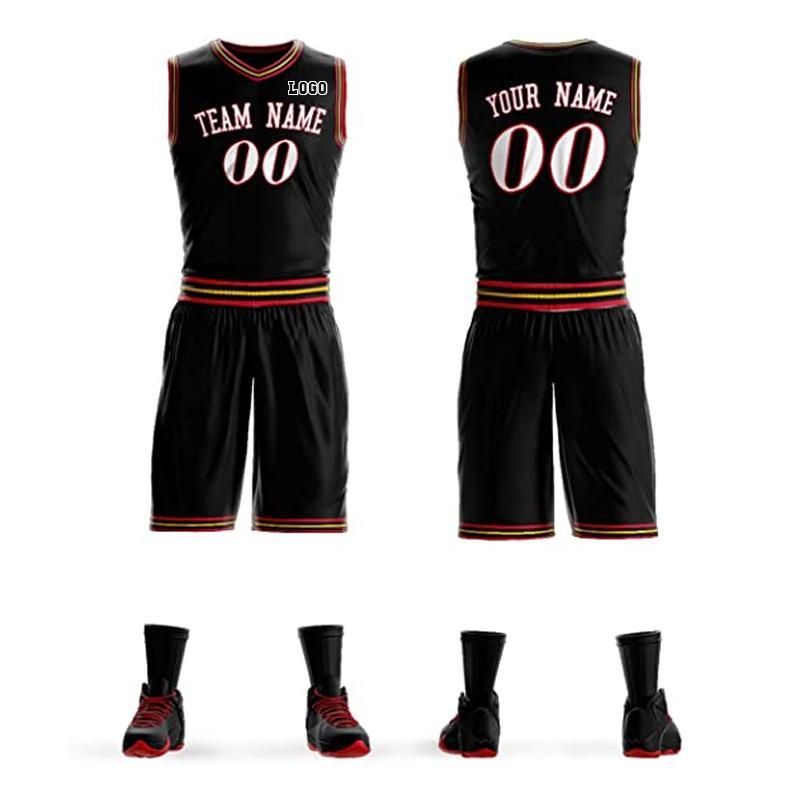Basketball is a sport where precision, speed, and teamwork are key, and the uniform plays a critical role in enhancing these elements. Over the years, the Basketball Uniform has evolved from simple, functional attire to a symbol of team identity, culture, and even fashion. Today, it’s not just about what players wear on the court; it’s about how they express themselves, represent their teams, and stay comfortable while delivering top-notch performances.
The Evolution of Basketball Uniforms
The history of basketball uniforms dates back to the early 20th century. In the early days of the sport, uniforms were quite basic, typically consisting of wool or cotton jerseys and shorts. The primary focus was on functionality, with little attention paid to style or aesthetics. These early uniforms were often heavy and uncomfortable, particularly during intense games.
As the sport gained popularity, the need for more practical and comfortable uniforms became apparent. In the 1930s and 1940s, basketball uniforms began to evolve, with the introduction of lighter materials like nylon and polyester. These fabrics were not only more comfortable but also allowed for greater freedom of movement, which is crucial in a fast-paced game like basketball.
The 1980s and 1990s marked a significant turning point in the design of basketball uniforms. During this period, the sport’s global popularity surged, and uniforms became a canvas for creativity and team identity. Bold colors, unique patterns, and team logos became standard features, transforming the basketball uniform into a powerful tool for branding and self-expression.
Design and Functionality: The Modern Basketball Uniform
Today’s basketball uniforms are a perfect marriage of style and functionality. They are designed with the athlete’s performance in mind, incorporating advanced materials and technologies to enhance comfort, mobility, and durability.
Material
Modern basketball uniforms are typically made from high-performance synthetic fabrics, such as polyester and spandex blends. These materials are lightweight, breathable, and moisture-wicking, helping players stay cool and dry during games. The fabrics also offer stretchability, allowing for a full range of motion without restriction.
Jersey Design
The basketball jersey is the most recognizable component of the uniform. It is sleeveless, allowing for maximum arm movement and minimal interference during shooting, passing, and dribbling. The jersey features the team’s colors, logo, and often the player’s number and name. The design of the jersey is crucial, as it not only represents the team’s identity but also needs to be easily distinguishable on the court.
Shorts
Basketball shorts have also evolved significantly over the years. They have become longer and baggier, a trend that started in the 1990s and has since become the standard. Modern shorts are designed to provide comfort and freedom of movement, with elastic waistbands and drawstrings for a secure fit. The length and cut of the shorts are carefully considered to ensure they do not impede the player’s performance.
Shoes and Accessories
While not technically part of the uniform, basketball shoes and accessories play a vital role in a player’s performance and are often coordinated with the uniform. Basketball shoes are designed to provide support, stability, and traction, essential for quick movements and jumps. Accessories such as headbands, arm sleeves, and compression garments are also popular, offering both functional benefits and an opportunity for players to express their personal style.
Cultural Significance and Style
Beyond the court, basketball uniforms have become a significant part of popular culture. The NBA, in particular, has been a driving force in this phenomenon, with iconic teams and players influencing fashion trends around the world. The jerseys of legendary players like Michael Jordan, Kobe Bryant, and LeBron James are not just sportswear—they are symbols of greatness, worn by fans and fashion enthusiasts alike.
Basketball uniforms have also become a medium for social and political statements. Players and teams have used their uniforms to promote messages of unity, equality, and social justice. Whether it’s through special edition jerseys or symbolic color schemes, the uniform has become a powerful platform for advocacy and change.
Customization and Personalization
One of the exciting trends in basketball uniforms is the rise of customization. Teams at all levels, from professional to amateur, are embracing the ability to create unique, personalized uniforms that reflect their identity and values. This trend has been fueled by advancements in printing technology, which allow for intricate designs, logos, and even player names to be easily incorporated into the uniform.
For fans, personalized jerseys have become a popular way to show support for their favorite teams and players. Whether it’s a custom name or a special number, these personalized uniforms offer a deeper connection to the sport and the team.
Conclusion: The Future of Basketball Uniforms
As basketball continues to evolve, so too will the uniforms. The future of basketball uniforms will likely see further integration of technology, such as smart fabrics that monitor player performance or adaptive materials that respond to the player’s movements and temperature. Sustainability is also set to play a more significant role, with an increasing emphasis on eco-friendly materials and manufacturing processes.



